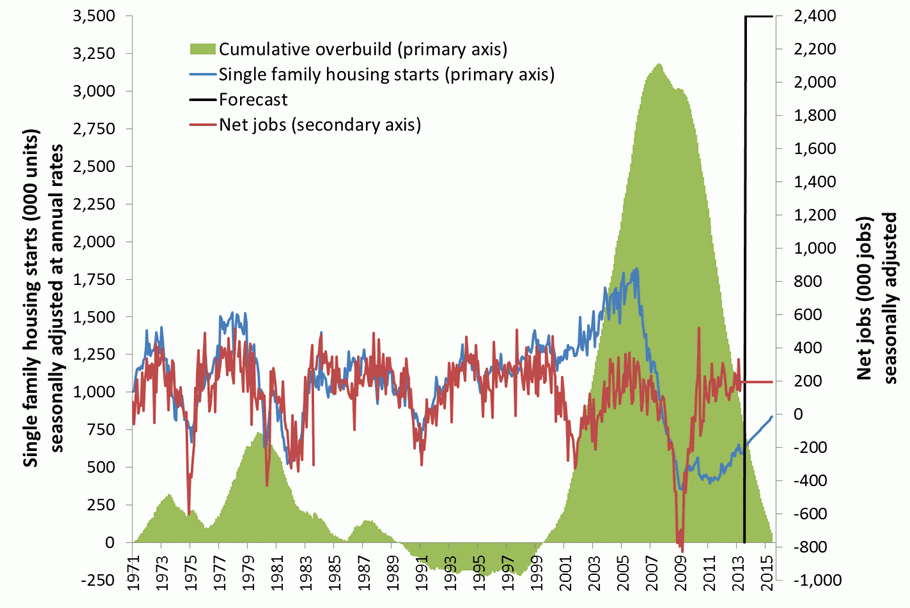Selective Cuttings
Progress towards U.S. housing market normalization
August 6, 2013
Despite encouraging signs, U.S. single-family house construction (the single largest source of demand for Canadian softwood lumber) remains at only slightly over 50% of its long-run average production. At this point in time, the market appears to be approximately two years away from returning to average production levels.
The U.S. single-family house construction market
The primary driver of U.S. single family housing construction is net job creation. Increasing the number of employed persons leads to a demand for increased housing stock. From 1971–1999 there was a very close correlation between these two variables. However, beginning in early 2000, this relationship changed radically—a change that has since become known as the “housing bubble”.
Now, market forces are never in perfect equilibrium, nor is any economic model perfect. Using this model, some overbuilding was experienced in the 1970–1980 period, and the 1990’s were a slight underbuilding period (green area in the graph). However, the degree of over-building during the housing bubble was unprecedented, and left the U.S. with a large over-supply of single-family houses. Relative to what one would have expected given the level of job creation, the U.S. “overbuilt” by approximately 3.2 million homes over the 2000–2007 period. Since then, the U.S. has been “underbuilding” relative to the level one would expect from job creation alone, and has reduced the cumulative overbuild to only 25% of its 2007 peak.
Given this relatively simple model, and conservatively assuming a) net job growth will continue to average 195,000 per month in the medium term, and b) a continuation of the linear trend in construction expansion since 2011, one can expect the U.S. housing sector will have eliminated the over-build in mid-2015. Once the over-build is eliminated, the historic relationship should reassert itself, leading to a return to normal U.S. housing start levels.
Looser lending standards, or higher than expected job growth would likely move this date forward slightly, while U.S. economic headwinds, a strong shift in consumer preferences (e.g. towards multi-unit construction) or economic crises in the EU or China would delay it. Given the significance of this sector to Canadian softwood lumber production, one can reasonably expect steady improvement (subject to some volatility) in this sector (both in terms of employment and profits) for at least the next two years.

